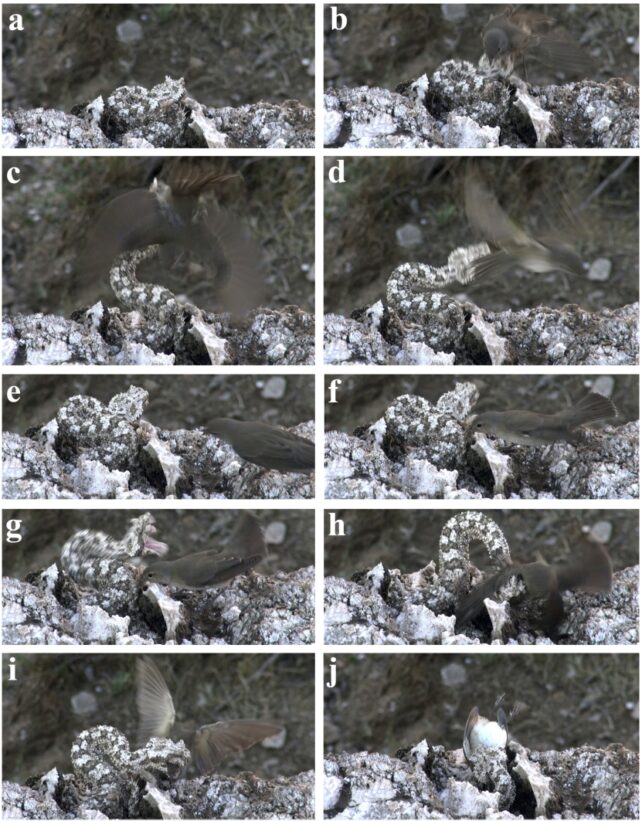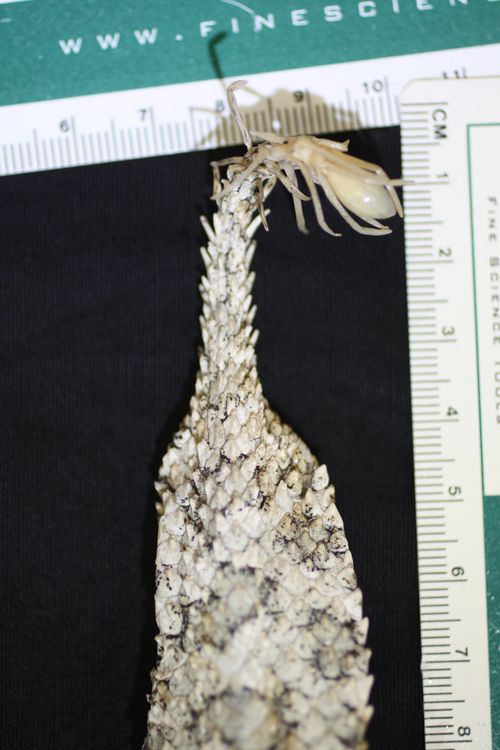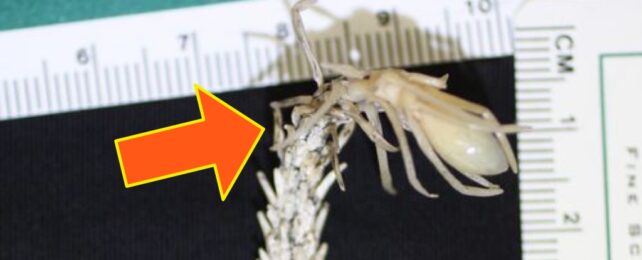Some snakes go hunting for their prey. Others sit and wait for their prey to come to them.
The spider-tailed horned viper (Pseudocerastes urarachnoides) finds its meals by moving nothing but the tip of its tail.
With just a few wiggles and waggles, the venomous viper can make its tail look like a crawling arachnid.
Really, the resemblance is uncanny, even to a forewarned human observer.

In reality, the 'spider' dancing at the tip of the snake's tail is a knob of tissue with long tendrils on either side. At rest, it looks innocuous, but in just a moment, it can come to life.
The effect is all the more powerful considering just how well the rest of the snake blends into its rocky habitat.
Frozen in plain sight, the puppeteer is all but invisible to unsuspecting avians looking for a snack. Little do the birds know that they are about to become the meal.

The spider-tailed horned viper has one of the most elaborate tail ornamentations ever recorded among snakes, and yet for decades, the elusive creature and its incredible hunting strategy evaded the notice of scientists.
A single, preserved specimen was kept, all but forgotten, at the Field Museum of Natural History in Chicago for 35 years.
The tail of the specimen was highly unusual, and yet scientists couldn't be sure if it was a new species or an aberration. The weird tip could just as well be a tumor or the result of a parasite.

It was only in 2003 that scientists found another viper of the same kind, confirming that this was, in fact, a whole new species.
Even then, however, little was known of the snake's behavior in the wild. Bird remains were found in the stomachs of some specimens, but it wasn't clear how the viper was snagging such high-flying prey.
After years spent watching the spider-tailed viper in its natural habitat, researchers in Iran published their results in 2015.
The team found that spider-tailed vipers spent, on average, about a third of their time wagging their tails in key ambush sites. When a bird came into sight, the intensity of the snake's tail wagging increased by roughly fourfold.

While other vipers and snakes also use similar tail tactics while hunting (what scientists call 'caudal luring'), the mimicry employed by the spider-tailed viper is exceptionally sophisticated.
According to initial data, the viper's trick may work best on migrating birds, which aren't as familiar with the risks of picking up a stray spider in this alpine region.
It pays to be suspicious of a free meal.
